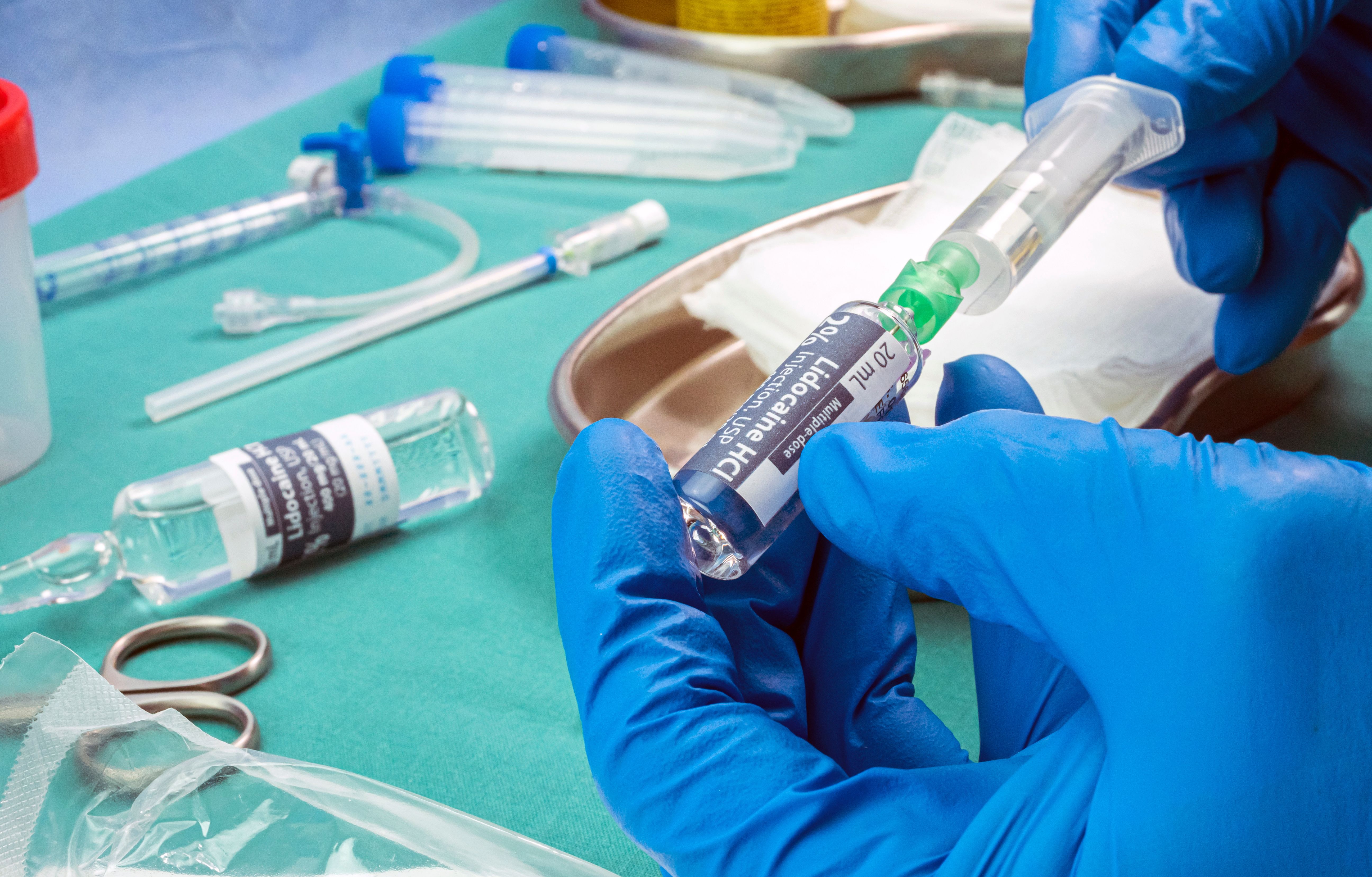Gold Microparticle Reactor Coupled to Mass Spectrometry for Catalytic Deethylation of Lidocaine
Optimal reaction conditions for the desired deethylation were found to be mild, using only water and oxygen at or close to ambient temperatures.
A new study in the journal Talanta has used liquid chromatography (LC) modules to demonstrate what the study’s authors refer to as the metabolically relevant dealkylation of lidocaine with gold (Au) particles as a catalyst (1). Both plug-flow injection and continuous-flow experiments are described in the report by way of a modular, online microflow reactor coupled to mass spectrometry (MS), with that system summarized using the abbreviation Au-catalyst-MS.
Nurse holds ampoule of anesthesia, preparation to extract cerebrospinal fluid to investigate causes in a person affected by transverse myelitis who was injected with experimental Oxford phase three | Image Credit: © Felipe Caparrós - stock.adobe.com

Authors Jos Hermans, Ali Alipour Najmi, Hjalmar Permentier, and Rainer Bischoff, all from the Department of Analytical Biochemistry in the Groningen Research Institute of Pharmacy at the University of Groningen, The Netherlands, said the modular system permitted the study and optimization of lidocaine’s reaction with an “oxygen generator” based on a manganese dioxide (MnO2)-reactor, along with post-reactor derivatizations (1).
The study references two processes the researchers hoped to investigate through their chosen methods: the dealkylation of lidocaine, which in general terms describes the removal of an alkyl group to form a corresponding alkane, and deethylation, which in a parallel sense is the removal of ethyl groups from a molecule (1). In this study, the catalytic deethylation of lidocaine on the gold particles, in the presence of molecular oxygen, results in lidocaine being deethylated to norlidocaine with the production of acetaldehyde.
Lidocaine is described by the National Institutes of Health (NIH) National Library of Medicine as an anesthetic agent typically reserved for local or topical use, but which can be used in conjunction with tracheal intubation and has antiarrhythmic and analgesic applications (2). Norlidocaine, a primary urinary metabolite of lidocaine, is sold in solution, such as in methanol, by suppliers including Sigma-Aldrich for applications in either liquid or gas chromatography coupled to mass spectrometry (LC–MS or GC–MS, respectively) including pharmaceutical research, forensic analysis, clinical toxicology, or urine drug testing (3).
According to the researchers, gold is traditionally considered to be inert but has been increasingly applied in homogeneous catalytic complexes (1). Previous studies, they said, showed that the introduction of nanoporous gold in the liquid phase resulted in the dealkylation of certain drugs. The intentions of this study were not only to test what a system constructed of an online microflow catalyst coupled to MS could reveal in lidocaine, but also to gauge the setup’s potential for studying other catalysts and reactions with minimal chemical consumption.
To that end, the team reported a high capacity for flexibility in the parameters used with this modular, online microflow Au-reactor-MS system, namely solvents, flow rates, temperatures, and both pre- and post-reactor reactions—though it should be noted that optimal reaction conditions were mild, using only water and molecular oxygen at or around ambient temperatures (1). A stable conversion efficiency (approximately 90%) of lidocaine to norlidocaine was achieved under mild, continuous flow conditions (pH 7, 30 °C, and 20 μL/min) for up to 10 h. And finally, the researchers said that because this system used a capillary tube as the reactor container, it is a more widely accessible alternative to microfluidic systems.
Reference
(1) Hermans, J.; Alipour Najmi, A.; Permentier, H.; Bischoff, R. Online Coupling of a Catalytic Continuous Microflow Reactor to Mass Spectrometry. Talanta 2024, 266 (1), 124928. DOI: 10.1016/j.talanta.2023.124928
(2) Lidocaine – StatPearls – NCBI Bookshelf. https://www.ncbi.nlm.nih.gov/books/NBK539881/ (accessed 2023-09-05).
(3) Norlidocaine methanol 1mg/mL, certified reference material, ampule 1mL, Cerilliant 7728-40-7. https://www.sigmaaldrich.com/US/en/product/cerillian/n124 (accessed 2023-09-05).

.png&w=3840&q=75)

.png&w=3840&q=75)



.png&w=3840&q=75)



.png&w=3840&q=75)





